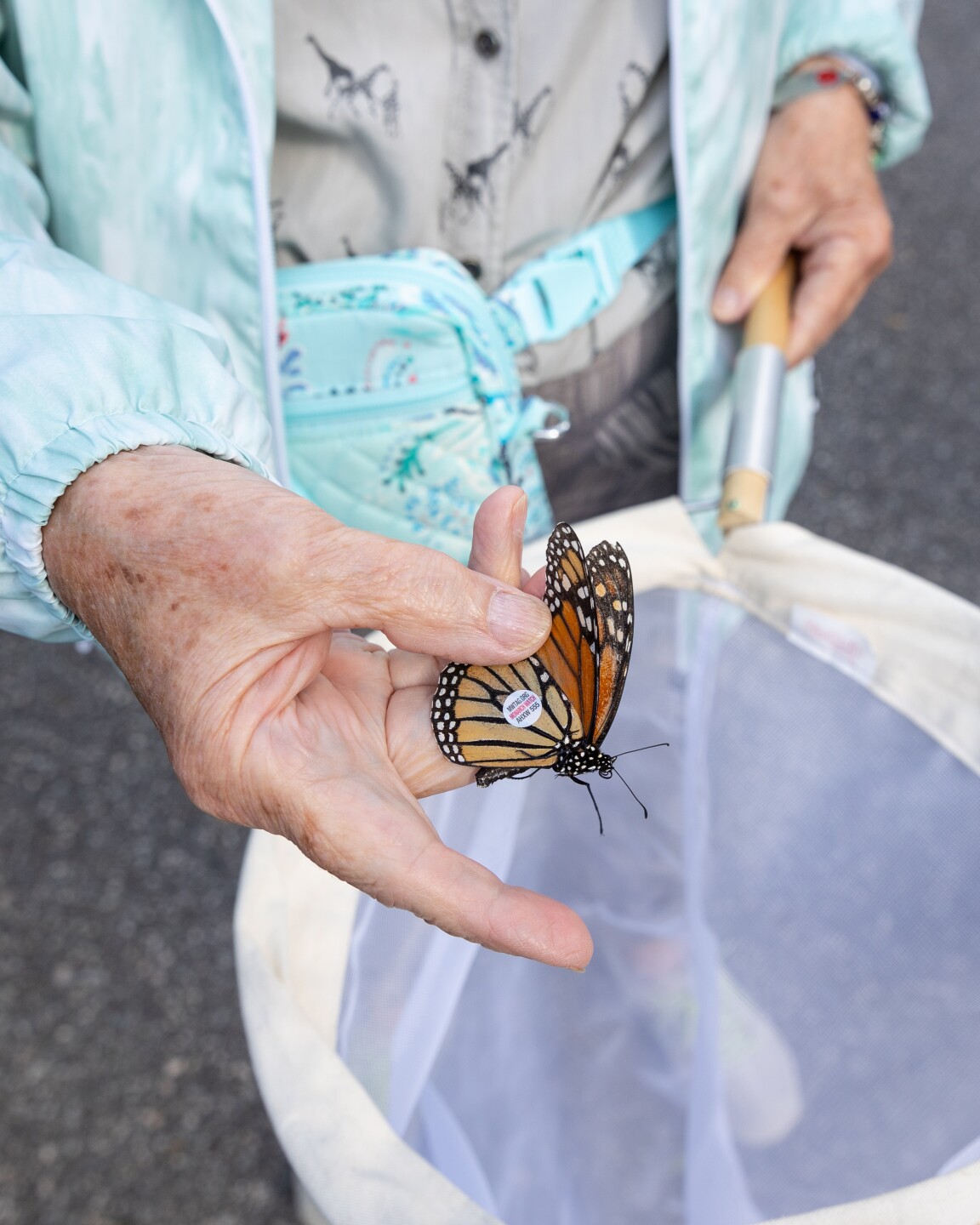NORFOLK, Va. — The Virginia Zoo in Norfolk is working on a special project that entails putting stickers on eastern monarchs to learn new things about the butterflies.
There are two main thoroughfares east of the Rocky Mountains that monarchs use for their famous seasonal migration, according to Sydney Fordice at the Virginia Zoo. The main one passes through the central United States to Mexico, and a smaller one follows the east coast. Migration can take up to 6 months and span up to 3,000 miles.
Monarchs can travel about six miles-per-hour and from 50 to 100 miles a day, according to the Virginia Zoo. Virginia Beach is the farthest north that monarchs have been known to overwinter.

These butterflies experience a "moving hibernation," according to the Zoo. Meaning that monarchs go through a process called diapause, where they are still active but their body processes slow to accumulate fat as energy storage. As a result of these slowed processes, monarchs living in the migration season can live from six to nine months, while non-migratory generations only live a few weeks.
The Virginia Zoo participates in Monarch Watch, a community science program that tags butterflies to study migratory patterns, according to the zoo. Volunteers around the country capture, tag, and release wild monarchs or breed, tag, and release human-bred butteflies.

Identifying sticker tags go on the wings of the butterfly and do not affect its flying, according to the zoo. Community scientists in Mexico search for tagged butterflies and report the data to the Monarch Watch program. They are paid around $5 for each tagged butterfly recovered and reported.
Monarchs were categorized as Endangered by the International Union for Conservation of Nature (IUCN) Red List in July of 2022 due to habitat loss and climate change, according to the zoo. The Virginia Zoo is a member of the Association of Zoos and Aquariums' "Saving Animals From Extinction" monarch program, or SAFE. The zoo has been tagging monarchs to research for 20 years.
Despite their fragile appearance, monarchs can be captured in nets and handled by volunteers without any damage to their wings, according to the zoo. The tags are designed to stick securely to the wing with minimal pressure, to not interfere with flying and to stay on.

Anyone can report a found monarch on the Monarch Watch app.
So far, data collected suggests that wild monarchs have a higher survival rate that those raised in human care, according to the zoo. Wild tagged butterflies in Mexico are recovered at twice the rate of reared tagged monarchs. Meaning that raised monarch should be kept outside, so that they can experience the environmental changes that can occur during migration and increase their fitness.










